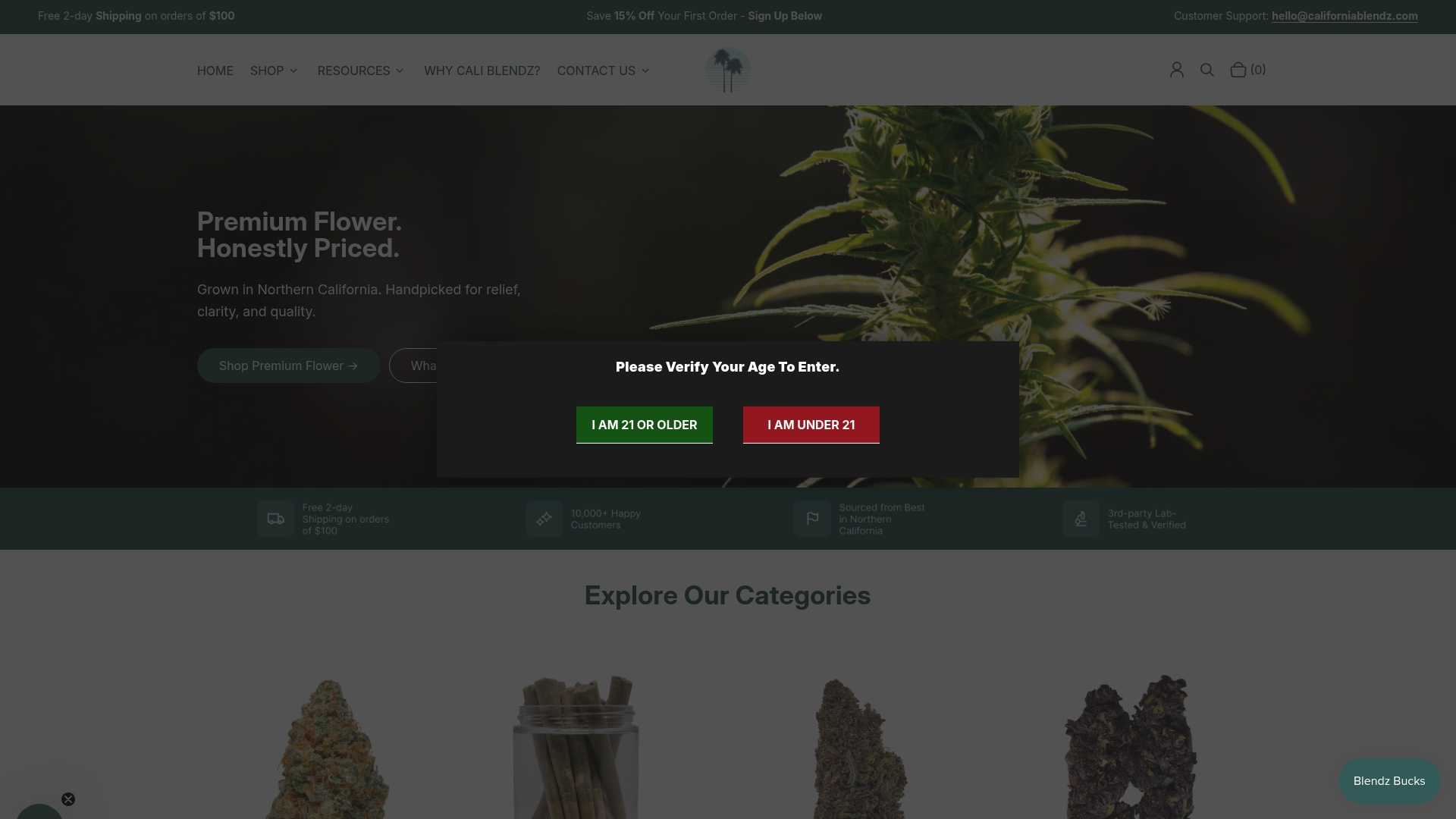Complete Guide to Cannabis Product Labeling
Written by Trevor

Clear, accurate labeling is the first safeguard for anyone buying cannabis products. Studies show that up to 30 percent of cannabis oils are mislabeled, putting users at risk and exposing brands to severe penalties. With regulations tightening across the industry, understanding what goes into effective label standards helps protect everyone. This guide breaks down the essentials of cannabis product labeling so you can spot safe products and avoid hidden risks.
Table of Contents
- Defining Cannabis Product Labeling Standards
- Types of Cannabis Product Labels Explained
- Legal Requirements and Regulatory Compliance
- Key Information on Cannabis Product Labels
- Risks, Penalties, and Common Labeling Mistakes
Key Takeaways
| Point | Details |
|---|---|
| Importance of Standards | Cannabis product labeling standards ensure consumer safety, regulatory compliance, and transparent communication about product contents and usage. |
| Required Label Information | Labels must include critical details such as cannabinoid content, potency levels, health warnings, and manufacturer information to empower informed consumer choices. |
| Consequences of Inaccuracies | Inaccurate labeling can lead to severe penalties, including fines and product recalls, thus requiring strict adherence to regulatory standards. |
| Educational Role of Labels | Beyond compliance, labels serve to educate consumers on safe usage and product characteristics, fostering trust and responsible consumption. |
Defining Cannabis Product Labeling Standards
Cannabis product labeling represents a critical intersection between consumer safety, regulatory compliance, and transparent communication. These standards are essential for ensuring that consumers understand exactly what they’re purchasing, how to use the product safely, and what potential effects or considerations they should be aware of. According to the United States Pharmacopeia, uniform, science-based public quality standards are paramount for cannabis and cannabis-derived products to guarantee consumer safety and maintain product consistency.
The core components of comprehensive cannabis product labeling typically include critical information such as cannabinoid content, potency levels, batch or lot numbers, manufacturing dates, recommended usage instructions, and potential health warnings. ASTM International has been instrumental in developing standardized frameworks, including the International Intoxicating Cannabinoid Product Symbol (IICPS), which provides a globally recognized marker for products containing intoxicating cannabinoids.
Key labeling standards often encompass several fundamental requirements:
- Total cannabinoid percentage and specific concentrations (THC, CBD, etc.)
- Product origin and cultivation information
- Extraction method details
- Third-party laboratory testing results
- Clear storage instructions
- Potential allergen warnings
- Recommended serving sizes
- Manufacturer contact information
These comprehensive labeling practices serve multiple crucial purposes beyond mere regulatory compliance. They empower consumers to make informed decisions, understand product composition, and use cannabis products responsibly.
 By establishing clear, consistent standards, the cannabis industry can build consumer trust, enhance product transparency, and support safe, educated consumption practices.
By establishing clear, consistent standards, the cannabis industry can build consumer trust, enhance product transparency, and support safe, educated consumption practices.
Types of Cannabis Product Labels Explained
Cannabis product labels represent far more than simple packaging information—they are critical communication tools that bridge the gap between manufacturers and consumers. Health Canada provides comprehensive guidance on different label types, distinguishing between primary and secondary labels, each serving unique informational purposes for cannabis products.
The primary categories of cannabis product labels typically encompass several distinct types:
- Primary Product Labels: Directly attached to the product container, providing immediate visual information
- Secondary Labels: Supplementary information sheets or external packaging details
- Medical Cannabis Labels: Specialized labels with additional medical usage instructions
- Recreational Cannabis Labels: Focused on consumer safety and legal compliance markers
- Hemp-Derived Product Labels: Specific requirements for non-intoxicating cannabinoid products
According to the National Safety Council, these labels must prioritize explicit, clear, and detailed information to prevent potential misuse and ensure consumer safety. Critical elements that must be prominently displayed include:
- Total cannabinoid percentage
- Product potency levels
- Batch and lot tracking numbers
- Manufacturer contact information
- Recommended storage conditions
- Potential health warnings
- Consumption guidelines
Effective cannabis labeling goes beyond mere regulatory compliance—it serves as an educational tool, helping consumers make informed decisions about product selection, usage, and potential effects. By maintaining transparency and providing comprehensive information, cannabis producers can build trust, support responsible consumption, and contribute to broader consumer understanding of these complex products.
Legal Requirements and Regulatory Compliance
Navigating the complex landscape of cannabis product labeling requires a thorough understanding of intricate legal and regulatory frameworks. Health Canada has established comprehensive regulations that mandate strict labeling requirements, including bilingual labeling, standardized symbols, and explicit health warnings to ensure consumer safety and regulatory compliance.
The legal requirements for cannabis product labels typically encompass several critical dimensions:
- Mandatory Information Display
- Precise cannabinoid content percentages
- Clear health and safety warnings
- Detailed product origin information
- Manufacturer and distributor contact details
- Batch and lot tracking numbers
- Age restriction markers
ASTM International has further standardized regulatory compliance by developing the International Intoxicating Cannabinoid Product Symbol (IICPS), which provides a universally recognized marker for products containing intoxicating cannabinoids. This symbol helps consumers quickly identify and understand the nature of the cannabis product they are purchasing.
Compliance is not just about meeting minimum legal standards—it’s about building trust with consumers and demonstrating a commitment to transparency and safety. Manufacturers must stay current with evolving regulations, which can vary significantly between jurisdictions. Failure to meet these stringent requirements can result in severe penalties, including product recalls, financial fines, and potential loss of licensing. By meticulously following labeling regulations, cannabis producers protect both their consumers and their business interests, creating a responsible and accountable industry ecosystem.
Key Information on Cannabis Product Labels
Health Canada has established comprehensive guidelines that mandate specific, critical information must be prominently displayed on cannabis product labels to ensure consumer safety and informed decision-making. These guidelines are fundamental in creating transparent and responsible product communication.
The most essential components of cannabis product labels include:
- Cannabinoid Content
- Total THC percentage
- Total CBD percentage
- Minor cannabinoid concentrations
- Terpene profile
Research published in JAMA Network Open underscores the critical importance of accurate labeling, highlighting significant discrepancies in cannabis oil product content. These studies reveal that many products do not accurately represent their actual cannabinoid concentrations, making precise and transparent labeling crucial for consumer protection.
Additional key information that must be included encompasses:
- Batch and lot tracking numbers
- Harvest and packaging dates
- Recommended storage conditions
- Manufacturer contact information
- Potential health warnings
- Serving size recommendations
- Product origin and cultivation details
Beyond regulatory compliance, comprehensive labels serve as an educational tool. They empower consumers to make informed choices about cannabis products, understanding exact potency, potential effects, and safe consumption guidelines. By providing clear, detailed information, manufacturers can build trust, promote responsible use, and contribute to broader consumer understanding of cannabis products.
![]()
Risks, Penalties, and Common Labeling Mistakes
Research from JAMA Network Open reveals a critical landscape of potential risks associated with inaccurate cannabis product labeling. Manufacturers who fail to meet stringent regulatory requirements can face significant legal, financial, and reputational consequences that extend far beyond simple regulatory compliance.
The most common labeling mistakes that cannabis producers must vigilantly avoid include:
- Inaccurate cannabinoid content reporting
- Missing health warning statements
- Incorrect batch or lot tracking numbers
- Incomplete ingredient listings
- Absent storage condition instructions
- Unclear serving size recommendations
- Inconsistent product potency information
According to the Journal of Cannabis Research, significant discrepancies between labeled and actual cannabinoid content pose substantial consumer safety risks. These mislabeling issues can result in severe penalties, including:
- Substantial financial fines
- Product recall mandates
- Loss of manufacturing licenses
- Potential legal litigation
- Regulatory sanctions
Beyond immediate regulatory consequences, consistent labeling errors can devastate consumer trust and brand reputation. Responsible cannabis producers must implement rigorous quality control processes, conduct frequent third-party testing, and maintain meticulous documentation to ensure every product label accurately represents its contents. Transparency isn’t just a regulatory requirement—it’s a fundamental commitment to consumer safety and industry integrity.
Elevate Your Cannabis Experience with Clear and Trusted Labeling
Navigating the complexities of cannabis product labeling can feel overwhelming. The need for accurate cannabinoid content, transparent potency levels, and verified third-party lab results is critical for your safety and confidence. At California Blendz, we understand these challenges and put your trust first by offering premium hemp-derived products that strictly follow labeling best practices. Our commitment to transparency means every product in The THCa Prestige Vault and The Founder’s Collection comes with clear, detailed information about potency, sourcing, and lab testing.

Experience the peace of mind that comes from purchasing cannabis products with complete, reliable labels that help you make informed choices. Don’t settle for uncertainty—explore our curated collections now at California Blendz and find quality cannabis products that prioritize your safety, legal compliance, and wellness. Start your journey with confidence today.
Frequently Asked Questions
What key information should be included on cannabis product labels?
Cannabis product labels should prominently display total cannabinoid content, including THC and CBD percentages, batch numbers, manufacturing dates, usage instructions, health warnings, and manufacturer contact information.
How do labeling standards impact consumer safety?
Labeling standards provide transparency about product contents, allowing consumers to make informed decisions. Accurate labels help ensure safe usage and prevent misuse by clearly indicating potency and recommended serving sizes.
What are the common mistakes manufacturers make with cannabis labeling?
Common mistakes include inaccurate cannabinoid content reporting, missing health warnings, incorrect batch numbers, incomplete ingredient lists, and absent storage instructions, all of which can lead to consumer safety risks and regulatory penalties.
Why is third-party testing important for cannabis product labeling?
Third-party testing is crucial as it verifies the accuracy of the information presented on labels, ensuring that cannabinoid concentrations and safety details are reliable. This builds consumer trust and compliance with regulatory standards.








